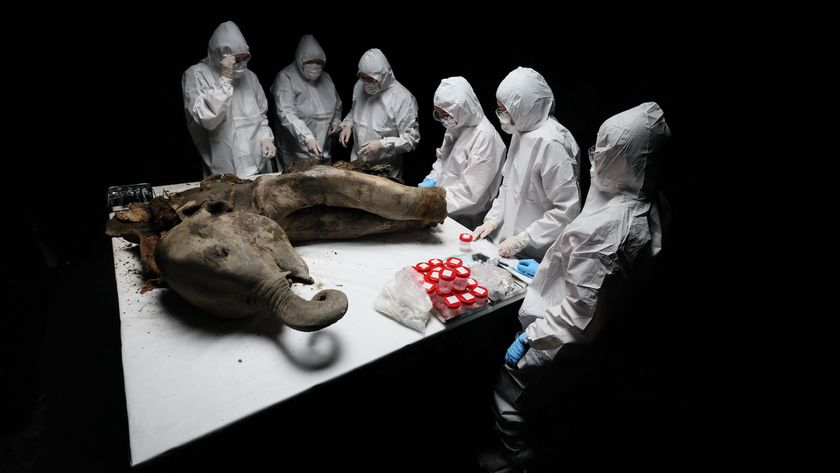How Jungle Rot Could Power the Future
Editor's Note: Each Wednesday LiveScience examines the viability of emerging energy technologies — the power of the future.
The genetics of "jungle rot" may hold the key to more economical biofuel in the near future.
Ethanol, the most common biofuel, is primarily made from grains, sugarcane and other crops. But it can also be made from cellulose — a chain-like molecule found in stems, bark and other plant parts.
To break down cellulose into fermentable sugars, however, requires special enzymes, called cellulases, which are expensive to produce. The biofuel industry has primarily obtained cellulase from the fungi Trichoderma reesei, which became infamous during World War II as jungle rot. The green mold (molds are a type of fungus) devoured military tents and uniforms in the South Pacific.
"T. reesei is currently the champion microorganism for commercial cellulase production," said Michael Himmel of the National Renewable Energy Laboratory in Golden, Colo.
To help reduce the cost of cellulase, an international group of scientists organized by the Department of Energy's Joint Genome Institute (JGI) in Walnut Creek, Calif., has now sequenced the DNA of one strain of T. reesei from the Solomon Islands.
The hope is that this genetic information could allow the engineering of fungi or bacteria that can produce enzymes more efficiently than the current approach.
Sign up for the Live Science daily newsletter now
Get the world’s most fascinating discoveries delivered straight to your inbox.
Break it down
Although biofuel has lately taken a bad rap due to links to rising food prices and possible environmental damage, this largely concerns ethanol derived from corn grain and other non-cellulosic sources, which have readily fermentable sugars.
Cellulosic ethanol has less of an impact on food prices because it is made from non-food crops, such as switch grass, or waste products, such as cornstalks. Moreover, studies have shown that ethanol from these inedible plant materials has a lower carbon footprint than corn-based ethanol.
Despite these facts, most ethanol in the United States continues to be made from corn grain, partly because cellulose is very hard to break down.
A better biofuel
Only certain organisms, such as bacteria in termite guts and fungi such as T. reesei, are able to degrade cellulose for energy, and extracting enzymes from these organisms has been expensive.
In 2001, the enzymes for making one gallon of ethanol cost more than $5, regardless of how they were derived. Since then, biotechnology research has reduced this to less than 20 cents, but even greater price reductions are needed to make biofuels more economical for consumers.
"The overall conversion process must be made less costly," said Himmel, who was not part of the current study. "Research aimed at improving the performance of fungal and bacterial cellulases is critical if these processes are to be robust."
To this end, the JGI researchers sequenced the 34 million base pairs in the T. reesei genome. The group was surprised to find that the fungus had a smaller number of enzyme-producing genes than other related fungi.
"We were aware of T. reesei’s reputation as a producer of massive quantities of degrading enzymes; however, we were surprised by how few enzyme types it produces, which suggested to us that its protein secretion system is exceptionally efficient," said lead author Diego Martinez from JGI.
The way its enzyme-producing genes were clustered together may also explain why T. reesei is able to degrade plant material so quickly, the authors wrote in a recent issue of Nature Biotechnology.
This new gene map will presumably give biotech companies the means for "tinkering with the genetics to make T. reesei produce more — or a better profile of — enzymes," Martinez told LiveScience.
- Innovation: Ideas and Technologies of the Future











